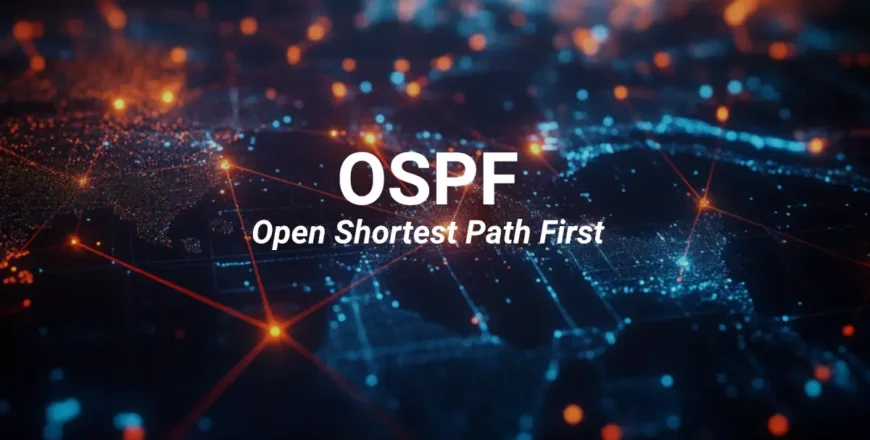OSPF Practice Labs
- Description
- Curriculum
- Reviews
This course offers a series of hands-on labs to master OSPF, a widely used link-state routing protocol known for its scalability and support for both IPv4 and IPv6. Participants will configure and verify multi-area OSPFv2 and OSPFv3, optimize DR/BDR placement, analyze LSAs, implement route summarization and filtering, and explore OSPFv3 with Address Families for unified IPv4/IPv6 configuration. Advanced labs focus on tuning OSPF timers, cost metrics, and authentication, as well as troubleshooting common issues like adjacency failures and suboptimal routing. Each lab includes detailed objectives, topology diagrams, configuration steps, and verification commands to ensure proficiency in OSPF deployment and maintenance. The course prepares students for the CCNP ENARSI exam and equips them with practical skills for enterprise network management.
-
1Lab 4 - Objectives and BackgroundTrial Text lesson
In this lab, you will configure single-area OSPF version 2 for IPv4 on a multiaccess Ethernet LAN. This lab was specifically designed to use two Layer 3 switches instead of three routers to highlight how a Layer 3 switch can also be used to provide routing services.
-
2Part 4.1: Configure Basic Device Settings and Interface AddressingTrial Text lesson
In Part 1, you will set up the network topology and configure basic settings and interface addressing on the router and Layer 3 switches.
-
3Part 4.2: Configure Single-Area OSPFv2Trial Text lesson
In this part, you will implement single-area OSPF on a multiaccess Ethernet network.
-
4Part 4.3: Configure and Verify the Advertising of a Default RouteTrial Text lesson
In this part, you will configure a default static route to the internet on R1. R1 will then propagate the default route to other OSPF routers as an external Type 2 OSPF route (i.e., O*E2).
-
5Part 4.4: Implement OSPF Network Optimizing FeaturesTrial Text lesson
In this part, you will configure OSPF optimizing features including; Passive interfaces, Link costs, Reference bandwidth, Hello and Dead interval timers.
-
6Part 4.5: DR and BDR PlacementTrial Text lesson
In this part, you will configure OSPF DR and BDR placement on the multiaccess network.
-
7La5 - Objectives and BackgroundTrial Text lesson
In this lab you will configure multiarea OSPF version 2 for IPv4
-
8Part 5.1: Build the Network and Configure Basic Device SettingsTrial Text lesson
In Part 1, you will set up the network topology and configure basic settings and interface addressing on the routers and Layer 3 switches.
-
9Part 5.2: Configure Multiarea OSPFv2Trial Text lesson
In this part, you will implement multiarea OSPF. Multiarea OSPF defines a two-layer area hierarchy using a backbone area interconnecting regular areas.
-
10Part 5.3: Exploring Link State AnnouncementsTrial Text lesson
In this part, you will verify that the network has converged and explore how link-state advertisements (LSAs) are used as the building blocks for the OSPF link-state database (LSDB).
-
11Lab 6 - Objectives and BackgroundTrial Text lesson
In this lab, you will configure route summarization and route filtering using Prefix-lists, ACLs, Distribute list in a multiarea OSPF network.
-
12Part 6.1: Basic Device Settings and RoutingTrial Text lesson
In Part 1, you will set up the network topology and configure basic settings and interface addressing on the router and Layer 3 switches
-
13Part 6.2: OSPFv2 Route SummarizationTrial Text lesson
To reduce the size of the routing table and LSDB, network prefixes must be summarized. Route summarization improves OSPF performance as fewer network entries are required.
-
14Part 6.3: OSPFv2 Route FilteringTrial Text lesson
In this part, you will learn about OSPF route filtering. Route filtering is a method for selectively identifying routes that are advertised or received from neighbor routers. Route filtering may be used to manipulate traffic flows, reduce memory utilization, or improve security.
-
15Lab 7 - Objectives and BackgroundTrial Text lesson
In this lab, you will configure the network with multiarea OSPFv3 routing using the AF feature for both IPv4 and IPv6 in OSPF areas 0, 1 and 2.
-
16Part 7.1: Device Settings and Interface AddressingTrial Text lesson
In Part 1, you will set up the network topology and configure basic settings and interface addressing on routers and switches.
-
17Part 7.2: Configure Traditional OSPFv3 for IPv6 on D1Trial Text lesson
In this part of the lab, you will configure traditional OSPFv3 for routing IPv6 on D1, which is in the IPv6-only area.
-
18Part 7.3: Configure OSPFv3 for AF IPv4 and AF IPv6Trial Text lesson
In this section you will configure OSPFv3 with AF for the IPv4 and IPv6 address families on R1, R2, R3, D1 and D2.
-
19Part 7.4: Verify OSPFv3Trial Text lesson
In this part of the lab you can verify neighbor adjacencies with traditional OSPFv3 and OSPFv3 with AF commands.
-
20Part 7.5: Tune OSPFv3Trial Text lesson
In this part you will configure the passive interface with passive-interface command in OSPFv3 router mode

Duration: 18 hours (self-paced, split across 8 lab sessions)
Level: Intermediate to Advanced
Delivery Method: Virtual labs with step-by-step guides and topology files
Tools Required: EVE-NG. Cisco Packet Tracer, GNS3, CML or physical Cisco routers/switches (IOS 15.x or later)
Certification Alignment: CCNA, CCNP Enterprise (ENARSI 300-410)
Prerequisites: Basic understanding of IP networking, routing protocols, and Cisco IOS commands
Hardware/Software: EVE-NG, Cisco Packet Tracer or GNS3 or CML installed on a computer with at least 8GB RAM, Cisco IOS routers/switches (physical or emulated, IOS 15.x or later), familiarity with Cisco IOS command-line interface
Knowledge: Understanding of IP addressing (IPv4/IPv6), subnetting, and routing concepts, familiarity with CCNA, CCNP routing.
CCNA, CCNP Candidates: Network professionals preparing for the CCNA, CCNP Enterprise (ENARSI 300-410) exam, seeking in-depth OSPF configuration and troubleshooting skills.
Network Administrators: Professionals managing Cisco-based enterprise networks who need practical experience with OSPF deployment and optimization.
IT Professionals Transitioning to Cisco: Individuals with general networking knowledge aiming to specialize in Cisco routing protocols.
Networking Students: Learners in networking courses or bootcamps who want hands-on experience with OSPF for career advancement.




